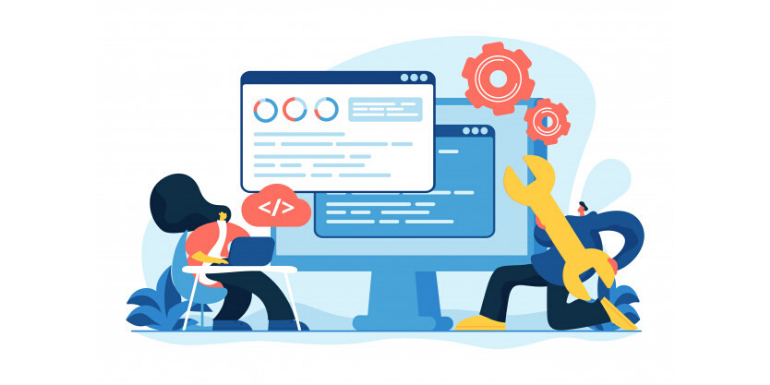Last updated on October 2nd, 2023 at 07:46 am
Table of Content
1. Introduction
2. What is the Software Testing Life Cycle?
3. Role of Software Testing Life Cycle
4. Phases of STLC
- Requirement Analysis
- Test Planning
- Test Design
- Test Environment Setup
- Test Execution
- Test Conclusion
- Test Cycle Closure
5. Key Takeaway
1. Introduction
Software testing is challenging yet an important aspect of the software development lifecycle which is at the core of exceptional digital experiences. If you can’t validate your software before it is used by the customers, you’re actually risking alienating them. It is not just a phase that needs to be only performed before the product is released, but it can be a multi-faceted and ongoing effort. Basically, it helps to determine whether the actual product meets the desired requirements and also make sure that it is completely error-free.
Software testing aims to detect bugs, find missing requirements, and resolve errors to make sure that it fulfills all the requirements. When the software development process is going on, you need to know that errors can be seen in any phase of the life cycle and some of them might be undiscovered. Thus, we cannot ignore the fact that Quality Assurance is really important to developing a scalable and robust product.
There are higher chances that the final code generates more errors in the design and functionality. So if you want to reduce overall cycle time and eliminate errors, you need dedicated QA engineers from a top-notch QA testing company to perform high-quality testing and provide robust software solutions. A well-tested product ensures dependability, security, and high performance, which leads to time savings and increased customer satisfaction.
In this post, we’re going to discuss in detail the software testing life cycle and solve all your queries running in your mind. So without any further ado, let’s get started!
2. What is the Software Testing Life Cycle?
Software Testing Life Cycle is a testing methodology that identifies what test activities to carry out and helps you efficiently meet software quality standards to get the desired results. Even though there are various testing strategies used by organizations, there is a testing life cycle.
Software testing life cycle implements systematic testing, which is performed in different phases. It is often confused with software development life cycle, but STLC focuses on testing whereas SDLC encompasses all the development phases.
In short, STLC refers to a testing process that performs several steps that need to be executed in a systematic manner to make sure that the quality of the product is maintained and it meets the desired requirements of the users. Each phase of STLC has different goals to achieve depending on the type of project but the basis remains the same.
3. Role of Software Testing Life Cycle
A software testing life cycle helps the development teams to:
- Verify that all the project requirements are achieved
- Clearly identify the goals and fulfill each aspect related to the project
- Enhance consistency
- Make it more effective
- Make sure to test the feature, when you add a new feature
Here are some common operations involved in the STLC framework:
- Analyze the requirements of the stakeholder and client
- Prioritize the features that are targeted
- Create a traceability matrix
- Demonstrate how the tasks of STLC can be automated
- Identify the environmental information
The advantages of software testing life cycle are:
- If software testing is performed efficiently, the project progress can be easily tracked.
- We can easily achieve the project requirements and define the goals and phases clearly.
- After software development, testing makes sure that all the tests are designed meaningfully.
- Following systematic testing standards makes the testing process faster and more effective as well as helps software testers to address issues quickly.
4. Phases of STLC
There are major six phases included in the software testing life cycle that are:
- Requirement Analysis
- Test Planning
- Test Design
- Test Environment Setup
- Test Execution
- Test Conclusion
- Test Closure
Let’s explore these phases and know in detail about them:
- Requirement Analysis
First things first, before we start testing the software, make sure to identify the requirements and check whether they are testable or not so that while the process of software testing is going on, no issues are created related to the requirements of the project. We can say that the entry criteria for this stage of STLC are the business requirement specification where the software testers along with the entire team, analyze the needs from a testing perspective.
After analyzing the requirements and goals of the project, the testing team can now communicate with system architects, business analysts, clients, and technical leads to plan the mitigation strategy. In this phase, the requirements are gathered to evaluate the testable aspects and to check whether the requirements are functional or non-functional. It has the ability to evaluate automated testing and approve a requirement traceability matrix for a feasibility report. Hence, we can say that the aim of this phase is to identify the testing scope and plan the mitigation strategy effectively.
- Test Planning
After collecting the requirements, the next step is test planning. In this phase, the test manager involves determining the expenses included for the entire project and the efforts required to accomplish it. The test plan is prepared in such a way that it fulfills the requirements that we listed in the initial stage such as determining the roles, assigning responsibilities, training needs, resource selection, and much more.
If we see it practically, test planning is the first phase of STLC that identifies the resources and activities that need to be carried out to meet the testing goals and track those metrics.
- Test Design
Once you’re done with test planning, your next step is test design and document. Here the testers need to test case development activities and prepare test data, test cases, and test scripts required to perform testing easily in the least time possible. After you’re done with the creation of test cases, your product is now ready to get reviewed by the team members and then proceed further to the team lead.
The testing team also prepared the RTM that traces the requirements of the product and verifies whether each need is fulfilled or not. Several tasks are carried out in this phase such as creating test coverage metrics, obtaining the test data, activating the testing environment, listing out the test conditions to boost coverage, preparing the requirements traceability matrices, and much more.
- Test Environment Setup
We can start the test design phase and test environment phase in parallel to save a huge amount of time that we can invest in other operations. The test environment is performed based on the software and hardware needs which might differ from project to project. In some cases, businesses might not involve the testing team in this phase if not required because the customer and development team provides the test environment. At the same time, the testers can start with the smoke test cases and check the readiness of the test environment.
Basically, this phase decides the condition of software and hardware under which your software product is tested. Here the testing environment is deployed and configured using various tools such as Katalon Studio, Selenium, and Appium to set up the test servers. After deployment, smoke tests are performed to check whether the intended functionalities of the products are achieved or are still pending.
Setup activities involved in the Test Environment:
- Go through the required architecture and environment configuration to prepare the list of hardware and software requirements for the Test Environment.
- Activate the test environment and test data
- Make sure that your product goes through the smoke testing phase on the build.
- Test Execution
As the name suggests, in this phase the actual execution of the product takes place. Before you proceed to the execution phase, don’t forget to check whether your entry criterion is done or not. And if you’re already done with your entry criterion, you need to execute the test cases and log defects to fill the traceability metrics to track your progress. The test cases are executed depending on the test cases that we discussed earlier.
If the report comes out to be passed, then you’re not required to worry at all, but if the report is prepared for failed test cases, you need to go through the bug tracking process using the tracking tools to resolve the defects. After that, retesting is performed to check whether the defect was fixed or not.
- Test Conclusion
Last but not the least, after going through all 5 phases of STLC, we are at the test conclusion stage. This phase aims to fulfill the exit criteria and product reporting. Based on your project, you can decide on reporting where you have to choose one from the types of reports that you are willing to send – Daily status reports or Weekly status reports based on whom you are sending your reports.
If the project leader is from the testing background or has ever worked with the testing team, they will be more interested in the technical factors of the project because they are used to it. But if you’re reporting to upper stakeholders, they might find this task challenging and make sure to perform this task instead of taking a risk.
- Test Cycle Closure
Last and the final stage of the software testing life cycle is creating the test closure report. Here the testing team will conduct a meeting to identify the cycle completion criteria based on your objectives, quality, and software cost. The testing team demonstrates the test artifacts that need to be implemented further to eliminate the bottlenecks in your future projects.
In this phase, the test reports are summarized and the entire testing process is carried out to check whether the expected results are generated or not. There are various activities included in the closure phase such as checking the test completion, resolving defects, conducting meetings, identifying the scope of improvements, and much more.
Key Takeaway
Software testing life cycle helps you to verify every aspect of the software testing and gives better product quality and efficient test results. Through proper testing, you can monitor the compatibility of the software with your browser and gain success in a short period. While going through the testing phase, you need to consider many factors so that you don’t miss out on anything.
After reading this article, you must know how important software testing is when it comes to building a scalable and robust product. So make sure you are not ignoring the testing process to deliver a quality product to your users. To ensure maximum productivity, you need to prioritize the testing operations and if you find this task challenging, you can also hire software testers from a top-notch software testing company and increase agile velocity.
We hope you find this post useful. We would be really happy if you share this post on Social media platforms and help us reach wider audiences.
Do not hesitate to ask your queries in the comment section given below and we will get back to you soon!
Thank you!



